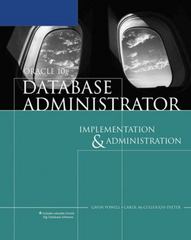Question
1. What is a regular expression? What is a DFA/NFA? (See questions on the homework relatingto these concepts.)2. What is a context free grammar? (Again,
1. What is a regular expression? What is a DFA/NFA? (See questions on the homework relatingto these concepts.)2. What is a context free grammar? (Again, see homework questions.)3. What is Chomsky Normal Form, and why do we care about it? How do you put somethingin CNF? (Again, see homework.)4. What is a LL grammar? What is an LR grammar? Why are they useful?5. What is lex/flex? (Recall basic rules, etc.)6. What is the goal of tokenizing? Why is it done separately from parsing?7. What is the big-O complexity of parsing? (HInt: there isnt one answer to this one.)8. What is the difference between top down and bottom up parsing?9. What is binding time?10. What is the advantage of binding as early as possible? Why do we delay bindings despitethis in some languages?11. What do lifetime and visibility mean in the context of binding?12. What do we mean by the scope of a binding?13. What is dynamic scoping (versus static scoping)?14. What is elaboration?15. What is a closed scope?16. What does the use of dynamic scoping imply the need for run-time type checking?17. What are aliases, and why can they be a problem in language design and implementation?18. Explain the differences (and similarities) between overloading, coercion, and polymorphism.Give an example of each of them in a programming language.
Step by Step Solution
There are 3 Steps involved in it
Step: 1

Get Instant Access to Expert-Tailored Solutions
See step-by-step solutions with expert insights and AI powered tools for academic success
Step: 2

Step: 3

Ace Your Homework with AI
Get the answers you need in no time with our AI-driven, step-by-step assistance
Get Started


